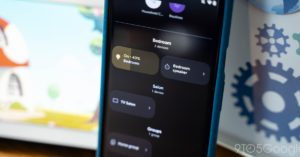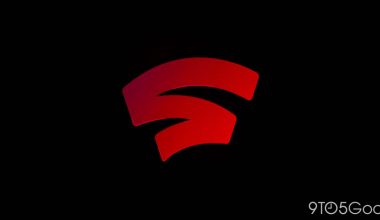Particularly with its ThinkBook business notebooks, Lenovo is noted for its relatively simple, office-friendly designs. However, the ThinkBook Plus Gen 3 ($2,309 as reviewed) is not your typical black slab: Thanks to an integrated second screen that is curved like a smartphone display and is located to the right of the keyboard, coworkers will be gazing over your cubicle wall to see this 17.3-inch monster.
The Gen 2 ThinkBook Plus offers better handwriting and interaction while the original model had an integrated e-ink display. The latest model is a huge step up, replacing the e-ink lid with an 8-inch touch screen that is pen-friendly in the palm rest and tantalizingly promises to fulfill all of your work fantasies. In truth, although being a technological showcase for Lenovo and a fun topic of conversation at work, the dual-screen design hurts this ThinkBook’s battery life and overall use. We commend the corporation for championing cutting-edge and unique product concepts, however we are unable to offer this Lenovo more than 3.5 stars.
in the (Opens in a new window)
FRAKENSTEIN FORM The ThinkBook Plus’s main selling point is its 8-inch touch screen, which can do a multitude of tasks, including acting as a second display, a numeric keypad, and a note-taking tablet when used with the included stylus. In just a moment, we’ll get into the specifics.
Credit goes to Kyle Cobian. A second display of sufficient size next to the keyboard necessitates an extra-wide laptop chassis (0.71 by 16.2 by 9.1 inches). Lenovo addresses the horizontal stretch by offering the main touch screen a distinctive 21:10 aspect ratio with a resolution of 3,072 by 1,440 pixels. The Gen 3 weighs 4.4 pounds, which isn’t heavy compared to comparable 17-inch laptops, but the widescreen design makes it more angular when closed than, example, the Dell XPS 17 (0.77 by 14.7 by 9.8 inches).
See It SIMILAR PRODUCTS 5.0
In a new window, click here
Excellent
See It
Outstanding LENOVO THINKPAD P1 GEN 4
3.5 Good Watch It
from Lenovo
The 3K resolution and ultrawide panel combo, which Lenovo claims is a first for the industry, is outstanding in and of itself, providing superb color coverage and brightness in our tests. Of course, you’re not interested in that display.
ADOPT A DOUBLE DISPLAY The ThinkBook Plus Gen 3’s second screen is essentially a small embedded tablet with 10-point multi-touch, 800-by-1,280-pixel resolution, and pen compatibility (the included stylus stores in a slot in the chassis). And what this screen is capable of.
Credit goes to Kyle Cobian. Some of the basic features appear clever enough, like turning on a number pad that transforms the touch screen into a cluster of nine keys. Additionally, there is a note-taking software that enables you to write, draw, and store handwritten notes.
The 8-inch display can also be used as a second screen for whatever you wish to monitor without taking up any space on the main panel. You can move that to the tiny screen and operate it with touch input or the standard keyboard and trackpad, whether it’s Slack or Microsoft Teams, your Twitter feed, or a YouTube video. Using a feature Lenovo refers to as a “waterfall display,” you can even stretch a document window down into the secondary screen.
Credit goes to Kyle Cobian. Of course, you can attach a mobile monitor, like the Mobile Pixels Duex Lite we reviewed last year, to get a second screen without purchasing a specially designed laptop. However, Lenovo has more daring intentions. Using the pen to annotate documents and images while sharing your primary screen in a presentation is possible because to the ability to mirror material between the two screens. Additionally, the auxiliary screen features a separate app launcher that you may personalize with your preferred widgets and tools.
Finally, you can connect your smartphone to the laptop and mirror the 8-inch display of the phone to make it simpler to access apps and files and view new messages. Lenovo only makes this trick available to owners of phones bearing the Motorola name, which leaves the typical Android and iPhone user out.
It’s undeniable that the ThinkBook Plus Gen 3 is an intriguing approach to merging personal computing and portable mobile devices. Unfortunately, as soon as it is put to use, it starts to break down.
INTERESTING CONCEPT, UNPLEASANT REALITY Using the laptop itself quickly turns from fascinating to irritating. It’s not as simple to use as the traditional keyboard and touchpad or the main touch screen when faced with a completely new interface, or even a known interface in an unusual location. Some of the features mentioned above seem great, but when used, they are awkward.
Credit goes to Kyle Cobian. Since the 8-inch panel is typically out of your line of sight when using the device, using the second screen for regular material isn’t as comfortable as it would be with an external monitor placed horizontally beside the primary display. It’s shockingly annoying and awkward to view a video while looking down at your keyboard. Only a small portion of smartphone owners will be interested in the Motorola phone pairing capability.
Even multitasking on the screen is excessive, and I have a suspicion Lenovo is aware of this. The term “hypertasking,” which refers to an intrusive progression of multitasking that includes everything from web browsing on one device while watching Netflix on another to taking a phone call while in the restroom, is used by the corporation in an promo video (Opens in a new window) for the laptop.
Credit goes to Kyle Cobian. In a perfect world, we’d be able to replace numerous screens and gadgets’ productivity increase with a single laptop-like device, but I don’t believe that the newest ThinkBook Plus has figured out how to achieve that.
Port choice The ThinkBook Plus Gen 3 rearranges the location of its ports so that they are now along the machine’s back edge rather than along the side where the smaller screen is located. An audio jack and a single USB-C 3.2 port that serves as the AC adapter connector are located on the left side of the notebook.
Credit goes to Kyle Cobian. Credit goes to Kyle Cobian. An HDMI monitor output, two USB Type-A ports, and a USB-C/Thunderbolt 4 port with DisplayPort, power delivery, support for storage arrays, and docking stations are located on the rear of the device. Wi-Fi 6E and Bluetooth are also available on the system for wireless connectivity.
A DUAL-SCREEN DRAWBACK AND A DECENT PERFORMANCE ANALYSIS OF THE THINKBOOK PLUS GEN 3 Our review machine has a 12th Generation Intel Core i5-12500H processor and is the base configuration, costing $2,309. (four Performance cores, eight Efficient cores, 16 threads). Along with Intel Iris Xe integrated graphics, it has 512GB of NVMe solid-state storage and 16GB of memory. There are more expensive options, such as Core i7-12700H machines with up to 32GB of RAM and 1TB of storage. The highest configuration is $2,789.
Since 17-inch business laptops are hard to come by, selecting reference systems for our benchmark charts was a little difficult. We ultimately chose the Dell XPS 17, which is now our favorite big-screen desktop replacement, the Lenovo ThinkPad P1 Gen 4, a 16-inch business workstation, and two other dual-screen devices: the gaming-focused Asus ROG Zephyrus Duo 16 and the prior Lenovo ThinkBook Plus Gen 2. Although the Plus Gen 3 is not your typical laptop, it is still not the purest combination of machines for performance comparisons.
TEST FOR PRODUCTIVITY The primary benchmark of UL’s PCMark 10 measures overall performance for office-focused tasks like word processing, spreadsheet work, web surfing, and videoconferencing. It does this by simulating a range of real-world productivity and content-creation processes. We also conduct the Full System Drive test in PCMark 10 to evaluate the throughput and load time of a laptop’s storage.
To determine a PC’s aptitude for processor-intensive workloads, three benchmarks concentrate on the CPU while utilizing all available cores and threads. While Primate Labs’ Geekbench 5.4 Pro mimics well-known programs like PDF rendering, speech recognition, and machine learning, Maxon’s Cinebench R23 renders a complicated scenario using that company’s Cinema 4D engine. Finally, we transcode a 12-minute video clip from 4K to 1080p quality using the free and open-source HandBrake 1.4 program (lower times are better).
The PugetBench for Photoshop productivity test, developed by workstation manufacturer Puget Systems, employs the Creative Cloud version 22 of Adobe’s well-known image editor to assess a PC’s capability for multimedia app development. Unfortunately, the ThinkBook Plus was unable to run the test.
The Gen 3 performed admirably in our productivity and CPU tests, outpacing its predecessor and comfortably passing the 4,000 point threshold in PCMark 10, which denotes fast operation for commonplace apps like Microsoft Office or Google Workspace. Even while it is not a workstation-class CGI rendering or video editing system, it can handle those tasks under pressure.
PHYSICS TESTS Two DirectX 12 gaming simulations from UL’s 3DMark, Night Raid (more subdued, ideal for laptops with integrated graphics) and Time Spy, are used to assess the visual performance of Windows PCs (more demanding, suitable for gaming rigs with discrete GPUs). Two more GFXBench 5.0 tests that are conducted offscreen to accommodate various display resolutions and stress OpenGL operations.
The ThinkBook Plus and its integrated graphics were never going to hold their own against gaming and workstation setups with dedicated GPUs. It didn’t really perform any better than the Gen 2 model with the lid-mounted e-ink screen, in fact. Even if it has some interesting tools for photo editing and visual design, you should forget about rendering engineering or architectural models or playing games after hours.
Tests on batteries and displays We use the open-source Blender film Tears of Steel to test the battery life of laptops by playing a locally stored 720p video clip with the audio level at 100% and the display brightness set to 50% until the computer shuts down. Prior to the test, we make sure the battery is fully charged and turn off Wi-Fi and the keyboard’s illumination.
Additionally, we gauge the color saturation of a laptop screen using a Datacolor SpyderX Elite monitor calibration sensor and accompanying software. We note the display’s brightness in nits (candelas per square meter) at 50% and peak settings, as well as the proportion of the sRGB, Adobe RGB, and DCI-P3 color gamuts or palettes that it can display.
It should come as no surprise that a laptop with not one, but two backlit displays has a limited battery life. The ThinkBook Plus Gen 3 was outperformed by devices with powerful processors and discrete GPUs by hours. Although having this gigantic desktop replacement primarily plugged in won’t make you significantly more sedentary than before because it isn’t designed for mobility, it does mean you’ll need to have the charger nearby because you won’t be able to go an entire day of work without it.
Credit goes to Kyle Cobian. The 17.3-inch widescreen display has good color reproduction and brightness, but because it is an IPS panel, it does not have the OLED screens’ extraordinarily high contrast. It might not be adequate for the most color-sensitive printing duties, but in our testing, it appeared bright and never faint. Although the second screen, which Lenovo claims delivers 350 nits of brightness, wasn’t compatible with our test apparatus, we can attest that it looked nice from all angles and that its anti-fingerprint coating was successful in preventing smudges and smears.
CONCLUSION: A GREAT IDEA THAT SHOULD PERSECUTE The ThinkBook Plus Gen 3 from Lenovo looks incredible and has the potential to significantly advance laptop technology, but in practice, the cool factor of a dual-display laptop doesn’t quite hold up. From Apple’s poorly welcomed MacBook Pro Touch Bar to the more popular Asus ROG Zephyrus Duo 16, many firms have tried dual-screen designs, but it seems like every attempt has issues with ergonomics, software support, and user adoption. The Gen 3 tablet’s right-of-keyboard positioning is a drawback, and the fact that only Motorola smartphones are supported makes it all but impossible to market.
Because of all of this, even though the main display is nice and the performance is good, this isn’t the business laptop to buy. Bravo to Lenovo for continuing to experiment, but it appears that the company will need at least one more go.
ThinkPad Plus Gen 3 3.5 from Lenovo
Pros Excellent, huge primary display with a 21:10 aspect ratio. Second 8-inch touch screen is very cool. includes a stylus pen solid efficiency for the majority of workplace tasks See More Negatives The positioning of the second screen is awkward. absurd restrictions on features that are mobile-friendly Unsatisfactory battery life (blame the dual screens) the conclusion Lenovo’s ThinkBook Plus Gen 3 is a well-built laptop with an intriguing experimental design that will impress you—until you need to complete important work.
APPRECIATE WHAT YOU JUST READ? Sign up for Lab Report to receive the most recent reviews and expert product advice in your inbox.
Advertisements, discounts, and affiliate links could be found in this newsletter. You agree to our Terms of Use and Privacy Policy by subscribing to a newsletter. You are always free to unsubscribe from the newsletters.







